Recent statistics from the Congressional Accountability Office of Compliance indicate that employee falls are private industry’s third leading cause of workplace fatalities. Around 600 workers die from a fatal slip, trip, or fall, each year.
Slip, Trips & Falls
Original price was: $11.99.$9.99Current price is: $9.99.
Description
Recent statistics from the Congressional Accountability Office of Compliance indicate that employee falls are private industry’s third leading cause of workplace fatalities. Around 600 workers die from a fatal slip, trip, or fall, each year.
Believe it or not, most falls occur on flat surfaces like plant floors. Common causes are slippery areas, improperly stored items, foreign objects, and floor surface issues.
Reporting hazards you see in and around the workplace and following good housekeeping practices are the best defense against a serious fall for you or one of your co-workers. What is the ‘good housekeeping’ principle? It means that when a worker encounters a spill, or finds debris in a walkway, they first recognize the impact this material might have for colleagues negotiating the path, and then act immediately to clear the hazard. In general, good housekeeping means keeping all places of employment clean, orderly, and sanitary, including storerooms, service rooms, passageways, and bathrooms. Think of picking up trash on the floors at home or children’s toys left out on a staircase, and it is easy to understand the idea.
As part of good housekeeping practices, safety professionals should be able to answer “yes” to the following questions:
- Do stairways and stairwells have smooth, continuous handrails and slip-resistant stair surfaces?
- Is lighting adequate in work areas and passageways?
- Is there proper drainage for wet processes and dry places to stand where practical?
- Do exposed walking surfaces have sufficient texture or treatment for safe traction?
If workers aren’t authorized to take action on safety issues, it’s their responsibility to alert a supervisor or employee representative about observed hazards.
Running, horseplay, and practical jokes significantly increase the potential for slips, trips, and falls. Encourage professionalism and discipline those who undermine the safety culture in this regard, if possible.
Cords and hoses pose other potential hazards. Watch for temporarily placed telephone, electrical, and extension cords, and pneumatic or hydraulic hoses lying across floors or suspended near them.
Here are some additional tips for preventing slips:
- Carry only what you can safely handle, especially if the load interferes with your ability to see where you’re going.
- Avoid storing boxes or other items on walking surfaces where people might trip over them.
- Don’t hurry, especially around corners.
- When ascending or descending stairs, use railings and handrails.
- Take one step at a time when going up or down stairs.
- Report worn, broken, or loose stair treads.
Let’s address a few common, specific hazards known to cause slips, trips, or falls.
Protect others by guarding floor openings. Unguarded or improperly guarded floor openings can result in serious injuries. Floor openings require standard guardrails if there is a drop of four or more feet to the adjacent floor or ground level. This type of railing system has top and intermediate rails, posts, and a toe board. The standard requires the top of the uppermost rail to be 42 inches above the floor and to be smooth-surfaced the entire length. The intermediate rail is approximately halfway between the top rail and the floor. The toe board forms a vertical barrier at floor level to prevent objects from sliding or rolling off the exposed edge.
If any elevated floor edge is next to dangerous equipment or hazards, such as pickling or galvanizing tanks or degreasing units, there must be a standard guardrail no matter what the height of the adjacent floor surface.
Stairway openings in a floor must have a standard guardrail on all exposed sides except at the entrance to the stairway. If the stairway is used infrequently and traffic across the opening prevents the use of a fixed, standard guardrail, a hinged floor opening cover of standard strength and construction must be in place.
Every manhole, trapdoor, or infrequently used pit must have a cover of standard strength and construction when it isn’t in use. When the cover isn’t in place, and there are no permanent guardrails in place, an attendant must constantly guard the opening or removable standard guardrails must protect all sides of the opening.
To protect workers from falls, every flight of stairs having four or more risers must have standard stair railings or standard handrails, depending on whether it’s an open-sided or enclosed stairway.
Finally, it is pretty common to be concerned for footing on icy surfaces when working outdoors and indoors, depending on the environment. These circumstances demand either avoidance or ice abatement, through measures like salt or other, chemical de-icing solutions; have these material available and prepared for use depending on the forecast.
Watch your step.
Why SafetyNow?
Not all training is equal. With SafetyNow, learners and leaders will notice the difference in value:
- Quality: Professionally-researched and designed using the latest mobile and responsive technologies
- Convenience: Works instantly on any device, desktop or mobile
- Time savings: What learners need to know, not extra fluff or legalese
- Reporting: Consistent, instant compliance records available anytime
- Support: Customer and learner support included at no charge
- Learning about the physical and behavioral hazards that can lead to slips, trips, and falls.
- Understanding the different ways both you and your employer are responsible for providing safe work spaces.
- Recognizing proper housekeeping practices and personal behaviors that can eliminate/prevent slip, trip, and fall hazards.
- Learning how to fall properly to avoid serious injury and how to respond to a fall injury.
- Any Learning Management System (LMS) Use with any SCORM, AICC, xAPI, TinCan, HTML5, or other LMS (learning management system).
- Any Device Desktop, laptop, tablet, or mobile phone – it simply works, everywhere.
- Engaging Professionally-developed, including an on-screen host and modern, easy-to-understand text, media, and voiceovers.
- Unlimited Attempts Each module can be taken as many times as required to get a passing grade. Unlike our competitor’s courses, if you get an answer wrong, you are redirected to the exact eLearning segment you struggled with… you don’t need to go through the entire module again, just the one part you need a refresher on.
Only logged in customers who have purchased this product may leave a review.


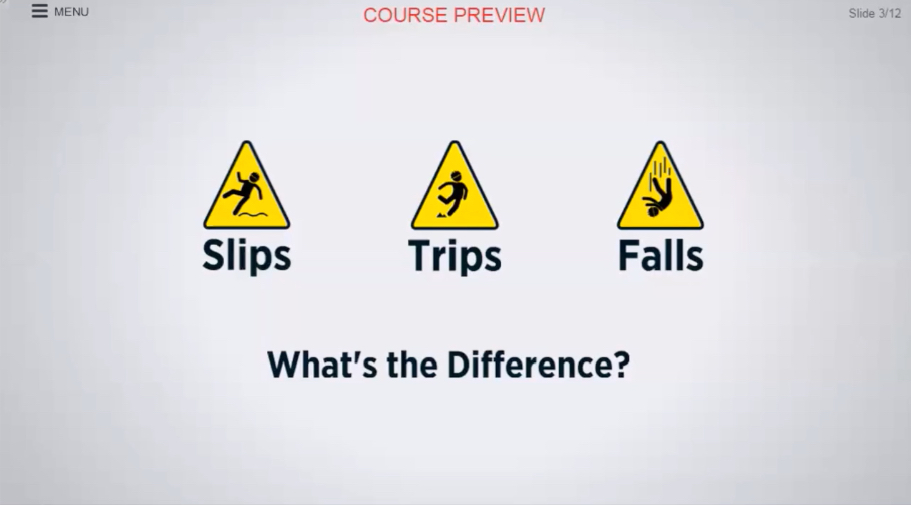
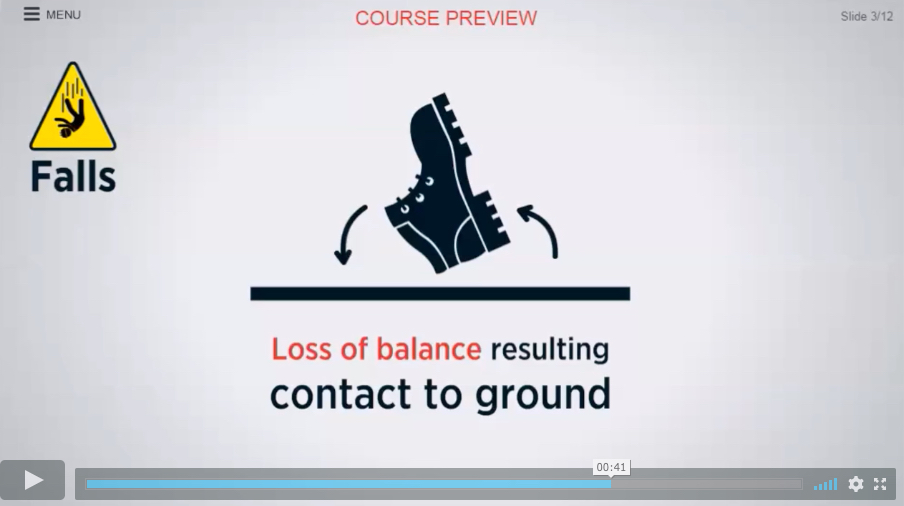
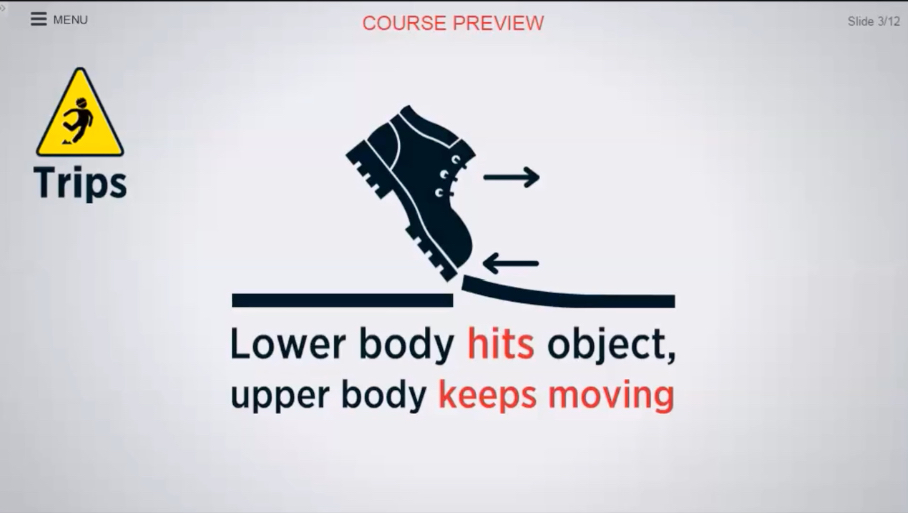
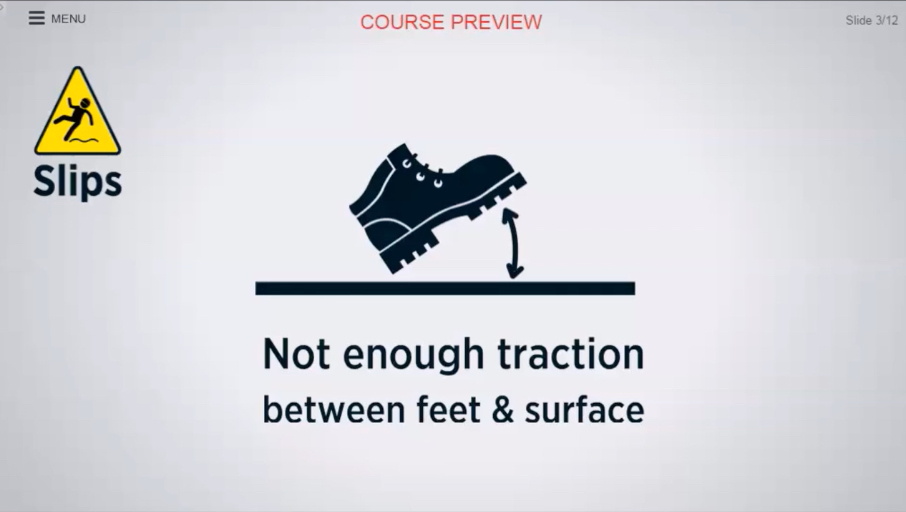

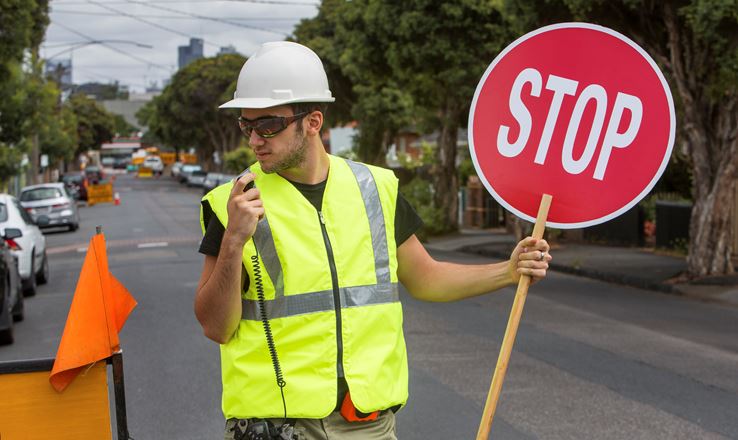





Reviews
There are no reviews yet.